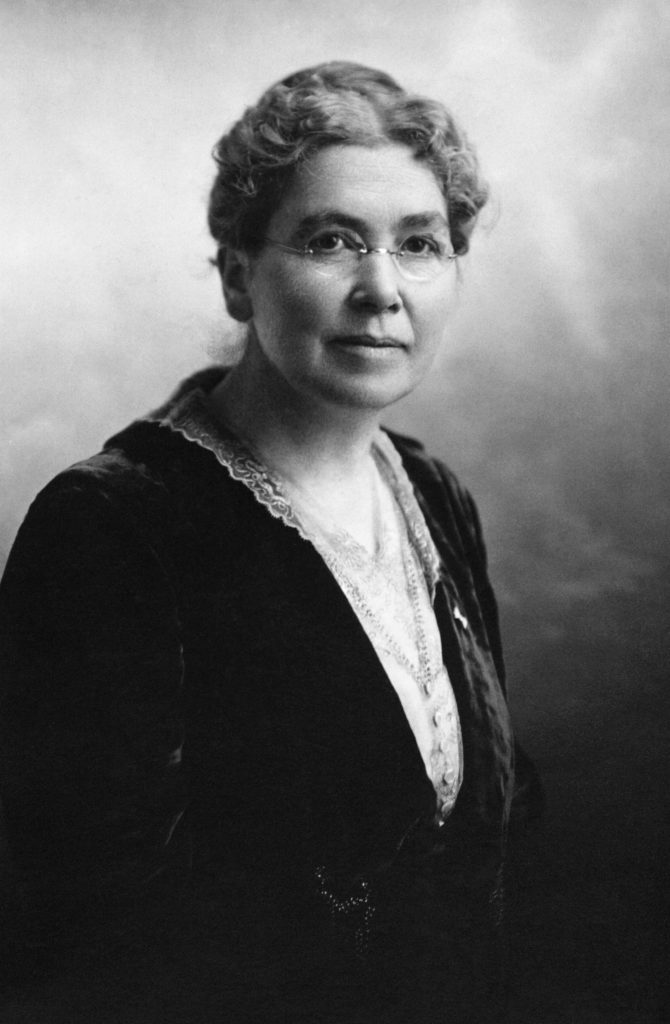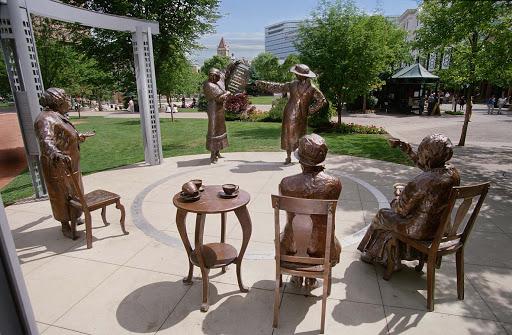Louise McKinney: Women’s Rights & Social Activist

Louise McKinney, a Claresholm resident, was a life-long champion of women’s welfare. Louise and her husband James came to Claresholm in 1903. She was very active in the community, helping to get a Methodist Church built in Claresholm. She was also an organizer for the Women’s Christian Temperance Union (WCTU) in Western Canada and served as president of the Alberta WCTU from 1908 – 1930s. Always interested in the welfare of women and children, Mrs. McKinney naturally took an interest in politics. McKinney was involved in winning women the right to vote in Alberta in 1916. In May 1917 she allowed her name to be put forward at a nomination meeting for the Non-Partisan League, a group with no affiliation to any of the established parties.
On Election Day Mrs. McKinney was elected to be the new representative from Claresholm, and in doing so became the first woman to sit in a legislature in the British Empire. Soon she became known as one of the most able debaters in Alberta’s Legislative Assembly. One of her major projects was to improve the antiquated legal status of widows and separated wives. With the help of Mrs. Henrietta Muir Edwards of Macleod, a bill was drafted and passed to become the Dower Act, one of Alberta’s most progressive laws.
Defeated in her second election, Mrs. McKinney was satisfied to retire from active politics. However, she continued to be actively involved in her community, her church, and with the WCTU. She and her husband supported the Church Union Movement, and she was a delegate to the final Methodist General Conference in 1925, after which she attended the first General Council of the United Church of Canada. She signed the Basis of Union as one of the commissioners, the only woman from western Canada to do so.
In August 1927, Mrs. McKinney joined Emily Murphy, Henrietta Muir Edwards, Nellie McClung and Irene Parlby to sign a petition to ask “whether the Canadian Government had the power to appoint a female to the Senate, and if it didn’t, what might be done” (p. 45, The Famous Five by Nancy Millar). When their petition was denied, these women appealed the decision to the British Privy Council, the highest court of appeal for Canada under the British North America Act. On October 18, 1929, the decision was handed down that women were persons, according to the British North America Act, and therefore could be appointed to the Senate.
In June 1931, Mrs. McKinney attended the national WCTU conference in Toronto. As acting president, she chaired many of the sessions. At the conference she was elected first vice president of the World WCTU.
While in Toronto, Mrs. McKinney became ill. Returning home, her condition worsened, and she died on July 10, 1931. At her funeral on July 15, over 100 WCTU members from all over Canada sat as a block in the packed church.
In 1938 a plaque honouring her achievements was unveiled in the hall next to the Senate Chamber in Ottawa. On June 13, 1947 a memorial plaque to Louise McKinney was placed on the front of the post office in Claresholm. On August 14, 1980 a Remembrance Cairn was unveiled at the Claresholm Museum, and in 1990 the museum gardens were named the Louise McKinney Memorial Gardens.


The Famous Five Foundation commissioned a sculpture to honor the five Alberta women who fought to have women recognized as persons. The sculpture, which depicted the five women celebrating their success, was unveiled at Olympic Plaza in downtown Calgary on October 18, 1999. In 2000 a replica was unveiled in Ottawa.
There was also a stamp issued by Canada Post on March 4th, 1981 showing a portrait of Louise Crummy McKinney with a vignette of three women in front of the Legislative Buildings in Alberta.


The Famous Five were also honored on the fifty dollar bill in 2004.
On October 5, 2019, the Honourable Lois E Mitchell, Lieutenant Governor of Alberta, and the Honourable Douglas Mitchell officially opened the Louise Crummy McKinney Gallery in the Station building. The gallery pays homage to Claresholm’s own Louise Crummy McKinney and the Famous Five’s endeavours in the fight for women’s rights in Canada, including a bust of Louise McKinney. Additionally, the gallery pays tribute to Women in Agriculture, with a digital display co-sponsored by the United Farmers of Alberta Historical Society and Alberta Culture.



